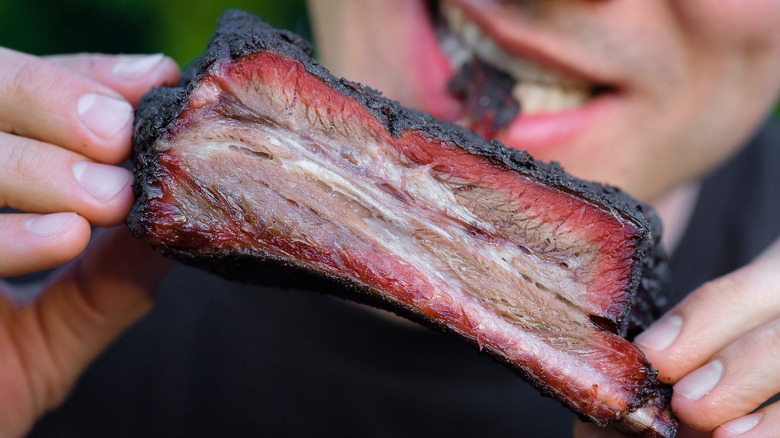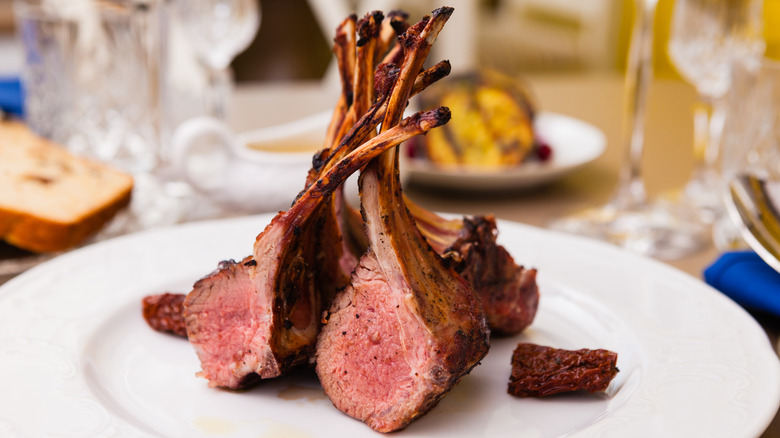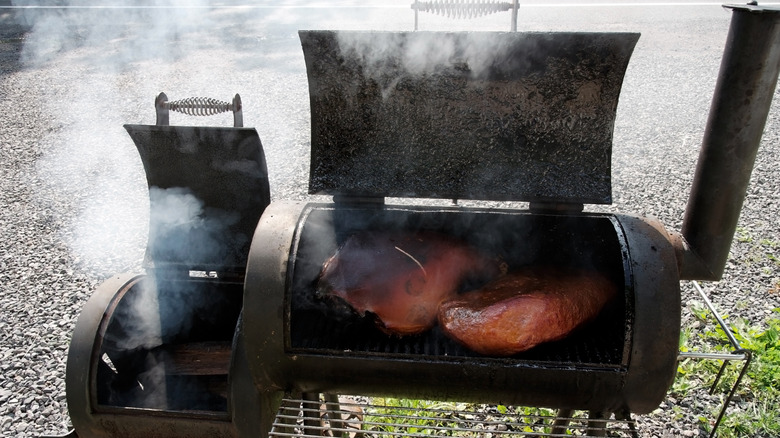Why Smoke Rings In Meat Aren't As Important As You Might Think
How do you spot excellent smoked meats? Ask 20 barbecue experts, and you may hear 20 different opinions. You have several ways to judge the gorgeous spread in front of you. Juiciness and tenderness of the meat are two vital factors, which are why artisans slow-cook their cuts for hours at low temperatures. Then you have the flavor, ranging from hickory and maple to mesquite and apple. Consider also whether the smoked meat was made using real wood chips or liquid flavoring versus charcoal or natural gas. What about that pink ring just underneath the charred outer skin?
With several opinions on how to make the best smoked meats out there, many proponents could say the pink-hued smoke ring indicates whether the cut of meat was cooked properly. Competitive barbecue chefs will tell you contest judges always look for a smoke ring to determine the technique used to smoke the meats. However, you don't need a pink ring to know you smoked your meat thoroughly, notes Texas Monthly.
Smoke rings come from nitric oxide and red meat
Smoke rings look pink or light red towards the outside edge of the meat, but this hue does not indicate raw or uncooked portions people should avoid. A smoke ring showcases a chemical reaction between a protein, myoglobin, in the meat, and nitric oxide present in real smoke, according to America's Test Kitchen. Nitric oxide melds with myoglobin to retain the pink color.
Other cooking methods, like roasting or baking, turn myoglobin gray upon reaching the correct temperature. Gray typically indicates the doneness of the meat. A pink smoke ring happens when nitrogen in wood or charcoal smoke seeps into the outer layer of meat before it cooks all the way. The amount of myoglobin, the temperature at which the meat is cooked, and the concentration of nitric oxide in the smoke all determine the extent of the smoke ring. Commercially available liquid smoke can also make a pink ring.
How to make a smoke ring in meat
Barbecue expert Dr. Greg Blonder of Boston University conducted thorough research on smoke rings in meat. He found that different types of wood, charcoal, and pellets produce widely varying amounts of nitric oxide when they burn, making different sizes of smoke rings. Cuts of red meat with fat near the skin may reduce or eliminate a smoke ring because the fat absorbs the nitric oxide before it reaches the meat.
If you're adamant about getting a thick smoke ring for your brisket, prime rib, or shoulder roast, Blonder suggests wood chips with bark on them and smoking at 225 degrees Fahrenheit for two to three hours. Rubbing liquid nitric oxide onto the meat's outer surface can produce similar results. The important thing to remember is that you can still have beautifully prepared, slow-cooked meats in your grill or smoker without a pink ring. Make sure you cook it to the right temperature based on the type of meat. For no smoke ring whatsoever, a propane or electric smoker does the trick while still delivering perfectly tender and juicy goodness.


